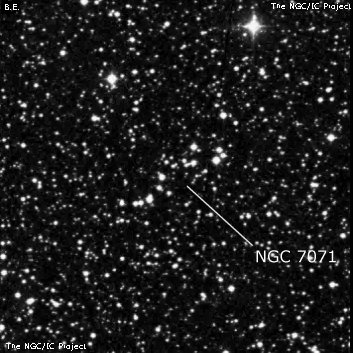
Wilhelm Tempel discovered NGC 707 = T IV-6 on 13 Nov 1879 with an 11" refractor at the Arcetri Observatory and reported "III class, with star in the middle." His micrometric position matches MCG -02-05-063 = PGC 6861 (verified by Sherburne Burnham in the Publications of Lick Observatory, Volume II). Burnham also discovered IC 168 1.0 minute of time west.
400/500mm - 17.5" (12/23/92): faint, very small, round, very small bright core. A faint star is superimposed [only 12" SE of center] and it gave the appearance of a double nucleus.
600/800mm - 24" (11/7/18): at 375x; small but fairly high surface brightness. Elongated ~2:1 (at least the brighter major axis), ~30"x15", faint stellar nucleus. A faint star (mag ~15.5) is superimposed on the southeast end.
Brightest in a group at z = .018 with IC 170 7.6' E, MCG -2-5-64 5.5' N, MCG -2-5-65 6.7' NNE, IC 168 is 15' WSW, LEDA 1002631 11' WSW.
MCG -02-05-064 appeared very faint, fairly small, slightly elongated N-S, ~30"x24", low surface brightness. MCG -02-05-065, a dimmer companion, is 2' NE. LEDA 1002631 was extremely faint and small, round, 10" diameter. Situated just 40" S of a mag 11.5 star and 3.5' E of IC 168.
Notes by Steve Gottlieb